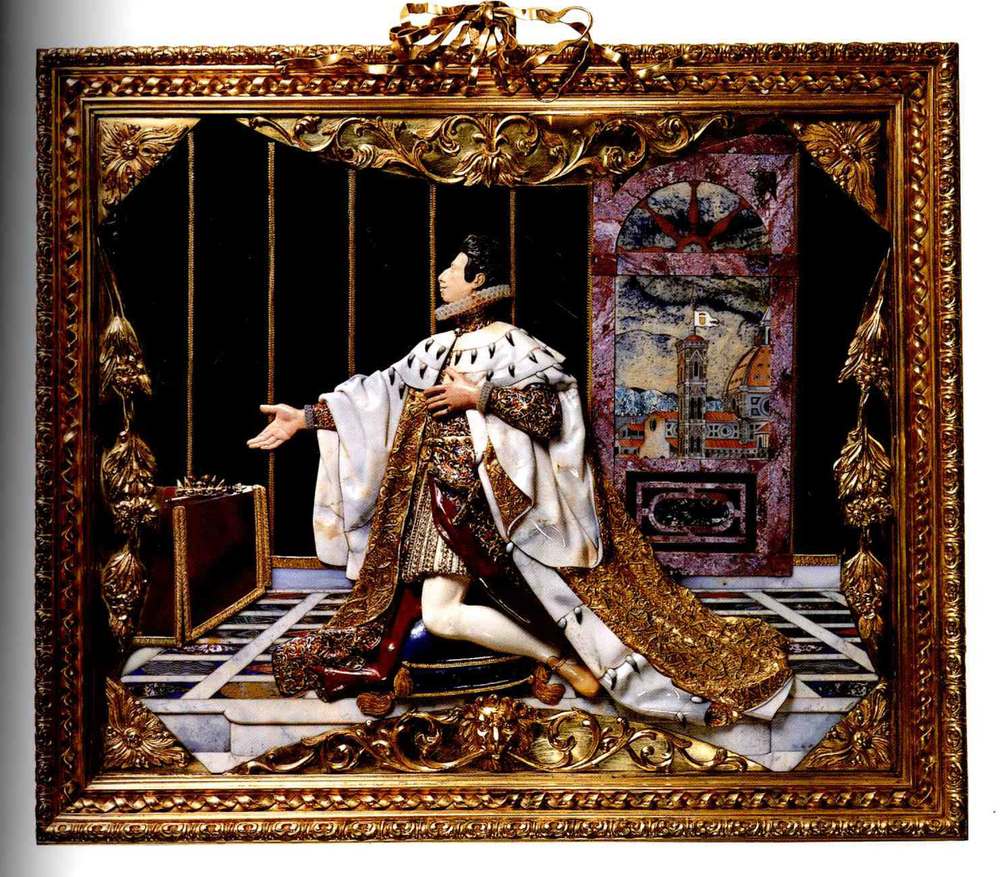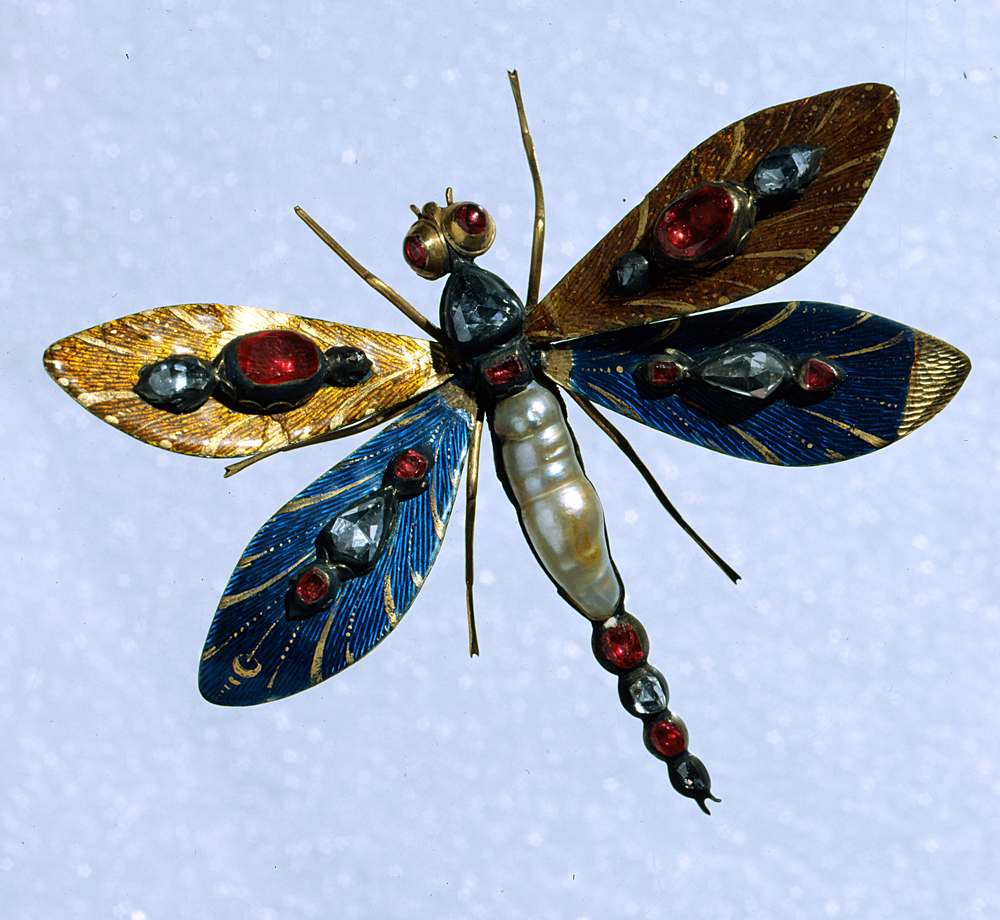"Treasury of the Medici in the Moscow Kremlin. Announcement
For the first time at an exhibition in Russia will be presented to the masterpieces that were included in the collection of the famous Florentine dynasty
Moscow Kremlin, May 20 - August 1, 2011
May 20, 2011 in the One-Chamber of the Patriarch Palace in the Moscow Kremlin to open a unique exhibition titled "Treasure of the Medici." For the first time at an exhibition in Russia will be presented to the masterpieces that were included in the collection of the famous Florentine dynasty. Over time, a magnificent collection of the Medici was scattered in various museums in Florence - most of it is stored now in the Museum of Palazzo Pitti silver, as well as the National Museum of the Bargello, the Palatine Gallery, the National Archaeological Museum, the Uffizi Gallery and the Museum of the Florentine mosaic («Opificio delle pietre dure "). They are all united in an impressive exhibition of the project the Kremlin Museums, to give a Russian audience the most complete picture of the splendor and magnificence of the Medici court. Never before in our country has not been this level of exhibitions dedicated to Italian arts and crafts. The current exhibition - part of the program, "Royal and Imperial treasures in the Kremlin", carried out by the Moscow Kremlin Museums since 2004, and is timed to the year of Russian language and culture in Italy and by Italian and Italian culture in Russia.
representatives of the Medici dynasty ruled Florence from the XV to XVIII Century. Climbing the family to the heights of power began with Cosimo the Elder, who managed to subdue the entire city, not even being recognized by its official head. The reign of Cosimo, and later - his grandson Lorenzo, called the Magnificent, became the golden age of Florence, has become one of the main centers of Italian Renaissance. Medici power was interrupted briefly after the death of Lorenzo, but in the first decade of the XVI century dynasty returned to the lost positions. With the help of Emperor Charles V received the title of the Medici grand dukes, and continued in that capacity to manage Florence (and later the whole Tuscany) during the next two hundred years. Only in the XVII century, their authority was weakened, and accidental death left no heirs Gian Gaston, the last member of the family, broke the dynastic line.
Start the Medici collection was laid even when Giovanni di Bichchi, father Cosimo the Elder. Inherited a passion for collecting and all subsequent generations. Unable to boast a high origin (according to legend, they were descended from the court physician of Charles the Great), the Medici were aware that the possession of exquisite and valuable things enhances their status, showing education and cultural owners, and, consequently, contributes to the consolidation of political power. Medici treasury includes crystal goblets, the most valuable antique vessels and cameos, coins and medals, precious vases, ivory with fine carvings, small plastic, bronze, whimsical sculptures from shells, cups, nautiluses in the precious setting, all sorts of jewelry. This world famous collection became a model for subsequent rulers of collectors, a kind of "protomuzeem" and the prototype of the future European Cabinets.
 Matteo Piatti Armor Francesco I Matteo Piatti Armor Francesco I Steel; chasing Florence, National Museum of the Bargello Source: Press Release Museum "Moscow Kremlin» |
Visitors to the Kremlin museums will be able to see the best things, carefully selected from the collection of Florence's rulers, to follow the formation and development of the collection. The exposition will be displayed in chronological order, representing the collective and the interests of the Medici, beginning with Lorenzo the Magnificent and ending with Anna Maria Luisa, the providing generic treasures of Florence on the condition that they will never leave the city. Featured in the exhibition items associated with specific representatives of the dynasty, not only as important as works of art, but they are valuable historical evidence to penetrate into the nature of their respective owners and to better understand the historical context in which they lived.
Thus, the first Medici preference for ancient monuments (or things "in the ancient style"), which was very typical of the Renaissance in general. Representatives of the Italian ruling birth wished to see themselves the successors of the Roman Republic and the Medici were not the exception. An important part of the exhibition will be a meeting of gems. Visitors will see magnificent works glyptic created in ancient times, as well as cameos made on the basis of the ancient samples, with portraits of the Florentine rulers who wanted to be immortalized in accordance with the ancient Roman cult of the famous husbands. One of the most interesting and surprising monuments of this series is the portrait of Savonarola - a fanatical monk, who preached in Florence in the late XV century. After the death of Lorenzo the Magnificent it for a while actually consolidated his power over the city, but was later executed. Cameo depicting Savonarola, carved carnelian famous master Giovanni delle Korniole (and nicknamed - cornelian) is stored in the collection of Cosimo I, among the most valuable items. Of no less interest are the gems with mythological images and scenes from Roman history - for example, "The Fall of Phaeton" or "Sacrifice Mutsiya Scaevola." With the influence of classical mythology associated yet another unique exhibit - a stamp with a relief depicting Hercules (as the founder of Florence), one of the most important symbols of power kind of Medici.
When the sons of Cosimo I, Francesco and Ferdinando , the collection has replenished with magnificent examples of "Pietrain fool" - products made from semiprecious stones, including vases of fantastic shapes in the form of various animals and birds. Grand Duke Francesco organized manufactory, where the best Italian and foreign artists who performed inimitable stuff from rock crystal vessels are made of semiprecious stones and even porcelain. Subsequently, these disparate workshops have been combined under one roof, the Uffizi Gallery, reached its height during the reign of Ferdinand I and became the center of the production of so-called Florentine mosaic. Moscow spectators can see splendid examples of works in this technique - the real picture of the stone, including the portrait of Ferdinand I.
 |
Medici XVII century already bore little resemblance to their glorious ancestors, rather than engaging in the affairs of state and culture, how their own amusements, but the passion for collecting has remained unchanged. When Cosimo II, following the Florentine duke, and his sons in a family collection in addition to traditional cameos, medals, vases and figurines, a large number of pieces of ivory - from elegant figurines (for example, admired the subtlety of execution of a figure beloved dog of Mary Magdalene of Austria, wife of Cosimo II ) to the complex religious compositions.
Particularly noteworthy gems associated with the name of the last of kind 'Medici - Anna Maria Louisa. Charms and jewelry created from baroque pearls, gold, enamel and precious stones, is a true miniature sculptures, among which there are scenes from the commedia dell'arte, classical mythology, figurines of animals and birds. One such skulpturok a golden cradle, inside of which is fixed a large baroque pearl, depicting a duvet blanket, beneath which is seen head baby. This was a symbolic gift to Anna Maria Luisa from a spouse with a wish of birth of his son and heir (a dream, and do not come true).
All items belonging to different members of a powerful dynasty, will be on display next to portraits of the Medici family, not just the immediate rulers of Florence, but and their famous relatives - including Pope Leo X, and French queens Catherine and Marie de Medici.
Along with the exhibition in Moscow in the Palazzo Pitti an exhibition "Treasury of the Kremlin". Thus the Italian audiences also have the opportunity to learn the best exhibits are stored in the Armoury collection. Such an exchange of masterpieces, no doubt, will bring together our cultures.
Source : a press release the Museum-Preserve "The Moscow Kremlin»
Permanent link to:
https://artinvestment.ru/en/news/exhibitions/20110503_sokroviwnica_medici.html
https://artinvestment.ru/news/exhibitions/20110503_sokroviwnica_medici.html
© artinvestment.ru, 2024
Attention! All materials of the site and database of auction results ARTinvestment.RU, including illustrated reference information about the works sold at auctions, are intended for use exclusively for informational, scientific, educational and cultural purposes in accordance with Art. 1274 of the Civil Code. Use for commercial purposes or in violation of the rules established by the Civil Code of the Russian Federation is not allowed. ARTinvestment.RU is not responsible for the content of materials submitted by third parties. In case of violation of the rights of third parties, the site administration reserves the right to remove them from the site and from the database on the basis of an application from an authorized body.




